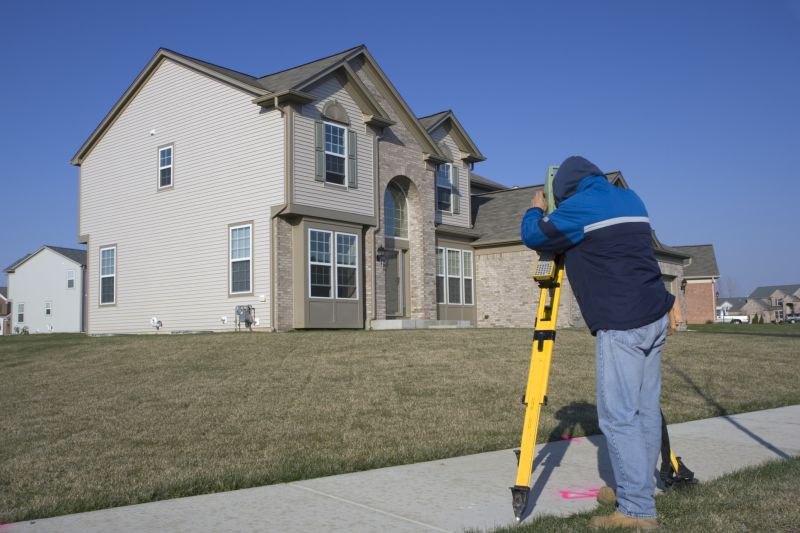Leading Property Line Surveying Tools for Accurate Boundaries
Explore top-rated equipment designed to help professionals achieve precise property boundary measurements with ease.
 Property line surveying is a fundamental process for establishing legal boundaries and ensuring accurate land division. Professionals in this field rely on a variety of tools and equipment to measure distances, angles, and elevations with precision. These tools must be durable, reliable, and suited to different environmental conditions to produce accurate results. Whether for residential, commercial, or agricultural purposes, selecting the appropriate surveying products is critical to achieving trustworthy outcomes.
Property line surveying is a fundamental process for establishing legal boundaries and ensuring accurate land division. Professionals in this field rely on a variety of tools and equipment to measure distances, angles, and elevations with precision. These tools must be durable, reliable, and suited to different environmental conditions to produce accurate results. Whether for residential, commercial, or agricultural purposes, selecting the appropriate surveying products is critical to achieving trustworthy outcomes.
Top Overall Option
Precision Total Station Set
A comprehensive total station set offers versatile measurement capabilities, combining electronic distance measurement with angular measurement for precise boundary determination. Its advanced features facilitate efficient data collection and integration with mapping software, making it suitable for a wide range of property surveying tasks.
Types of Products For Property Line Surveyings
Laser Distance Measurer
Compact and easy to use, laser distance measurers provide quick, accurate measurements over various distances, ideal for property boundary work.
Optical Levels
Optical levels help establish elevation differences and ensure level lines across property boundaries, essential for accurate land division.
Total Stations
Total stations combine electronic distance measurement and angle measurement, allowing for precise location and boundary marking.
GPS Survey Receivers
High-precision GPS receivers enable large-area boundary surveys with real-time data collection and mapping capabilities.
Measuring Tapes
Durable measuring tapes are fundamental for quick, manual measurements in tight or accessible areas.
Surveying Tripods
Tripods provide stability for optical and laser instruments, ensuring accurate measurements.
Prisms and Reflectors
Used with total stations, prisms and reflectors help target and measure specific points on the property.
Range Finders
Range finders assist in quickly determining distances in open areas, useful for initial boundary assessments.
Boundary Markers and Stakes
Markers and stakes are used to physically delineate property boundaries based on survey measurements.
Leveling Rods
Leveling rods assist in establishing elevation differences and ensuring level lines across the survey area.
Calibration Tools
Calibration devices ensure measurement instruments remain accurate over time and usage.
Digital Theodolites
Theodolites measure horizontal and vertical angles, critical for boundary triangulation and mapping.
Data Collectors
Data collectors interface with survey equipment to store and manage measurement data efficiently.
Surveying Software
Software tools assist in processing, analyzing, and visualizing survey data for accurate boundary mapping.
Portable Tripod Mounts
Portable mounts facilitate quick setup of measurement devices in various terrains.
Popular Choices
Widely used for quick measurements, laser distance meters are favored for their portability and ease of use.
Popular for large-area boundary surveys, handheld GPS units provide real-time location data and mapping.
Optical levels remain a staple for establishing elevation differences in property surveys.
Digital theodolites are frequently chosen for their precision in measuring angles during boundary triangulation.
Reliable tripods are essential for stable instrument setup, especially in uneven terrains.
Range finders are trending for their ability to quickly measure distances in open areas.
Durable stakes are commonly used to mark property corners after measurements are taken.
Calibration kits are popular for maintaining the accuracy of survey instruments over time.
Data collection devices are frequently used for efficient data management during surveys.
Mapping software tools are trending for their ability to visualize survey data accurately.
Traditional measuring tapes remain popular for quick manual measurements in various conditions.
Prisms are commonly used with total stations for precise point targeting.
Leveling rods are often selected for establishing elevation differences across large areas.
Portable tripods are favored for their ease of transport and setup in diverse terrains.
Modern surveying equipment combines traditional measurement techniques with advanced technology. Handheld tools like tape measures and leveling rods are still essential for quick, on-the-spot measurements, especially in smaller or less complex projects. More sophisticated devices such as total stations and GPS-based systems enable surveyors to cover larger areas efficiently while maintaining high accuracy. The choice of equipment often depends on the scope of the project, terrain, and required precision.
In addition to measurement devices, accessories like tripods, prisms, and calibration tools play a vital role in ensuring measurements are stable and precise. Proper calibration and maintenance of equipment are necessary to prevent errors and ensure consistent results. For property line surveying, clarity in marking boundaries is also crucial, which is why many surveyors utilize durable marking flags, stakes, and paint. Combining these tools effectively allows for comprehensive and accurate boundary determinations that meet legal standards and client expectations.
Key Buying Considerations
- Accuracy and precision requirements based on project scope
- Type of terrain and environmental conditions where equipment will be used
- Ease of use and user interface, especially for beginners
- Durability and build quality for long-term use
- Compatibility with existing surveying tools and software
- Range and measurement capabilities suited to project size
- Battery life and power source options for fieldwork
- Portability and weight, especially for remote or difficult-to-access sites
- Calibration features to maintain measurement accuracy over time
- Availability of technical support and warranty services
- Budget constraints and cost-to-value ratio
- Compatibility with data management and mapping software
- Regulatory compliance and legal standards for boundary marking
- Availability of accessories like tripods, prisms, and marking stakes
- User reviews and reputation within the surveying community
This content includes affiliate links, and we may earn a commission if you make a purchase through these links. This does not influence our recommendations or content quality.
